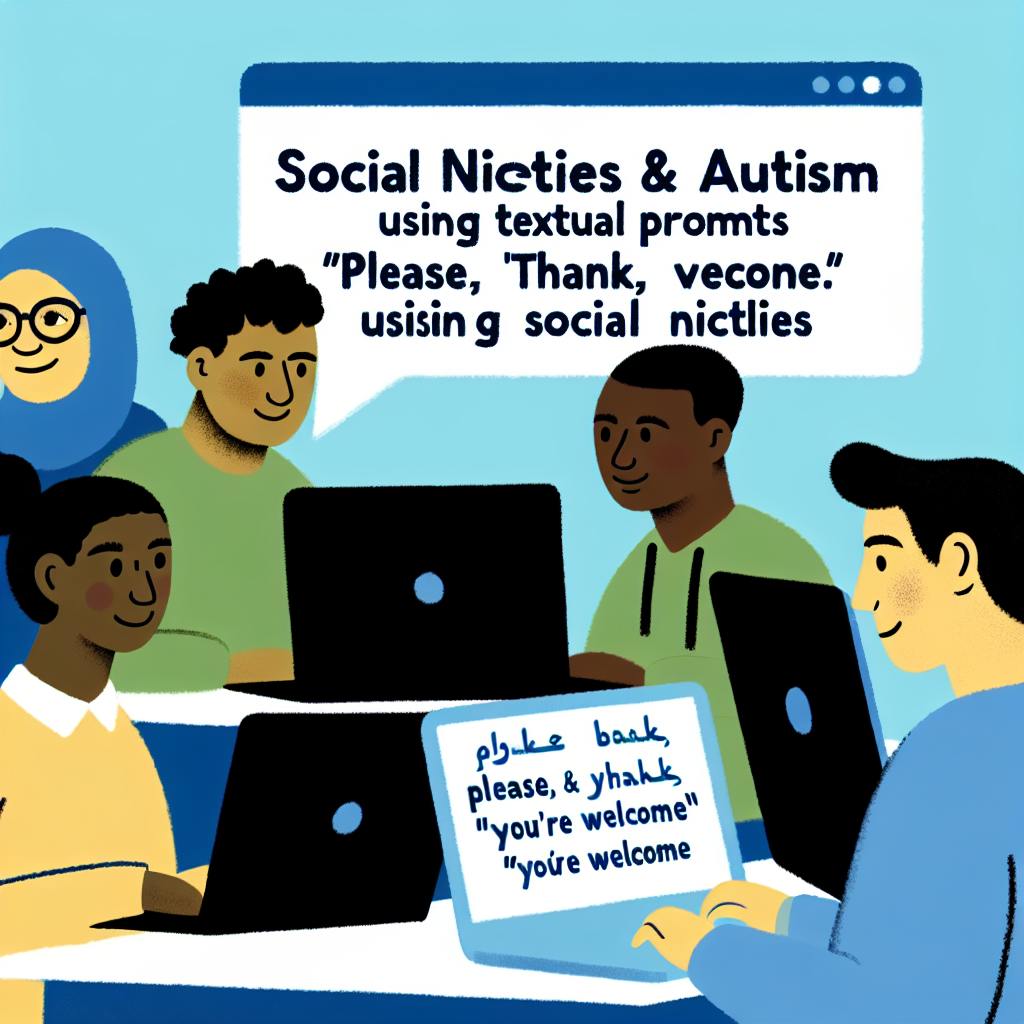Teaching Social Niceties to Individuals with Autism Using Textual Prompts
Social niceties, such as saying "excuse me" or "thank you," are important in workplace settings. For individuals with autism spectrum disorder (ASD), these social behaviors may not come naturally, which can create challenges when communicating with coworkers and supervisors. A recent study by Yamamoto & Isawa (2023) explores how textual prompts can help individuals with ASD improve workplace communication skills. This blog post reviews their findings and how behavior analysts can apply them in practice.
Why Social Niceties Matter in the Workplace
Individuals with ASD often experience difficulties maintaining jobs due to social communication barriers. Many workplace interactions require not only professional skills but also an understanding of social expectations, such as:
- Asking for help in a polite manner
- Expressing gratitude appropriately
- Understanding when and how to interrupt a conversation
Research suggests that employment rates for individuals with ASD remain low, despite their ability to perform job-related tasks. One contributing factor is the lack of social niceties, which may lead to misunderstandings with colleagues and supervisors.
Understanding Social Niceties vs. Social Skills
While social skills involve direct communication (such as making requests), social niceties are more subtle. Yamamoto & Isawa (2023) highlight the difference between these two concepts:
- Social skills: Vocally expressing needs, such as asking, "Can I use this stapler?"
- Social niceties: Adding polite phrases, like "Excuse me, can I use this stapler, please?"
The latter involves autoclitics, which modify or refine the meaning of a statement. Many individuals with ASD struggle with incorporating these nuances into their speech.
Past Research on Teaching Workplace Social Niceties
Several studies have tested different methods for teaching workplace social skills, including:
- Textual prompts and feedback – Yamamoto & Isawa (2020)
- Performance feedback alone – Yamamoto & Isawa (2021)
- Video modeling – Morgan & Salzberg (1992)
- Peer training with written text cues – Thiemann & Goldstein (2004)
- Graphic cueing strategies – Miller & Thiemann-Bourque (2016)
Despite various approaches, researchers continue to seek efficient and effective strategies for teaching these skills. The latest study by Yamamoto & Isawa (2023) focuses solely on textual prompts without additional feedback.
How the Study Was Conducted
Participants
The study included five adolescents and young adults with ASD, aged 15–25, who had:
- A formal ASD diagnosis
- The ability to hold basic conversations
- No cognitive impairments preventing workplace task execution
Experiment Setup
Researchers created a simulated workplace environment, where participants engaged in role-playing exercises with actors portraying coworkers and supervisors. Each participant encountered three common workplace scenarios:
- Consulting with a colleague – Asking for advice or clarification
- Delivering information – Relaying a message to a supervisor
- Borrowing work tools – Requesting permission to use an item
Before each interaction, participants read a textual prompt detailing expected behaviors. After the session, there was no additional feedback or correction from researchers or role-playing actors.
Using Textual Prompts as an Intervention
Each textual prompt contained a simple set of rules for workplace etiquette. One example for consulting with a colleague included:
- Begin with: “Excuse me, do you have a moment?”
- State your request clearly.
- End with: “Thank you for your time.”
Participants could review these written rules before engaging in the simulated interaction but did not receive verbal coaching or real-time cues.
Key Findings
After reading textual prompts:
- All five participants improved their use of social niceties in workplace interactions.
- Improvements persisted even after the prompts were removed, indicating behavior generalization.
- Textual prompts were a simple yet effective strategy requiring minimal resources or supervision.
Why This Matters for Behavior Analysts
For behavior analysts working with individuals with ASD, these findings suggest that textual prompts can be a valuable tool for teaching workplace social niceties. Key takeaways include:
- Ease of implementation – Textual prompts require little preparation and can be used in real-world job settings.
- Promotion of independence – Since prompts are non-verbal, they help individuals learn without constant supervision.
- Behavior generalization – Participants retained and applied these skills even after prompts were removed.
Compared to video modeling or performance feedback, textual prompts may serve as a low-effort yet effective approach for improving workplace communication.
Applying This Research in Practice
For behavior analysts, the study by Yamamoto & Isawa (2023) provides a simple framework for designing interventions. Here’s how it can be applied:
- Create custom textual prompts tailored to an individual’s work environment.
- Introduce the prompts gradually to allow for skill acquisition without overwhelming the learner.
- Fade the prompts over time to encourage independent use of social niceties.
By incorporating these strategies, behavior analysts can help individuals with ASD improve workplace interactions and job retention.
Conclusion
Teaching social niceties is essential for individuals with ASD to succeed in the workplace. The study by Yamamoto & Isawa (2023) demonstrates that textual prompts alone can effectively teach polite workplace interactions. These findings highlight an easy-to-implement, low-cost, and efficient strategy for behavior analysts supporting employment skills in individuals with ASD.
For full details on the study, check out the original research:
DOI: https://doi.org/10.1007/s40617-023-00840-x.



